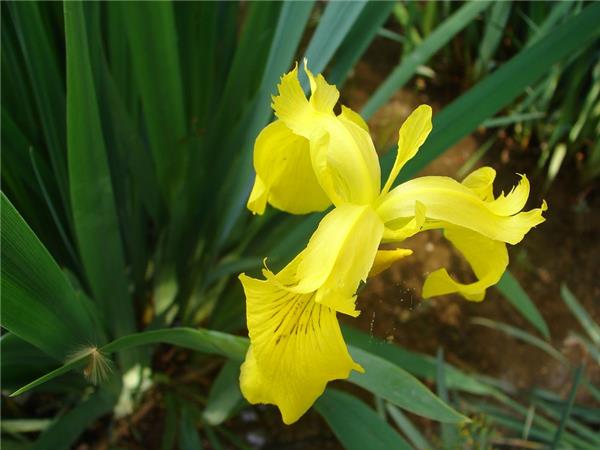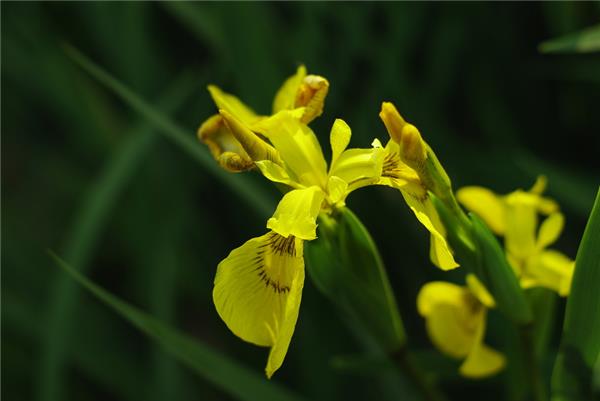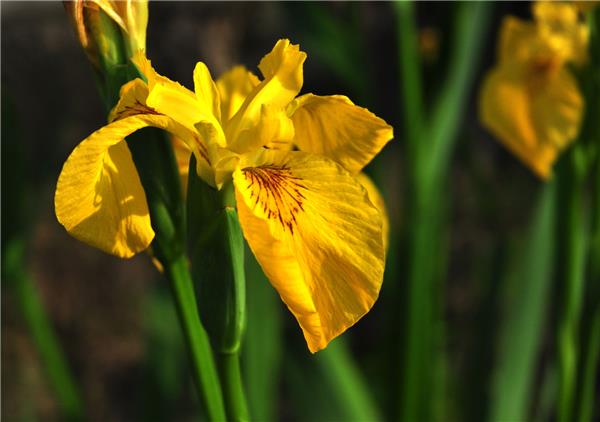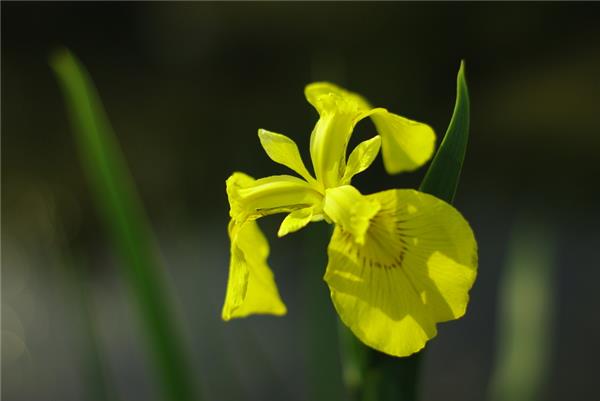Introduction to the Culture and Propagation of Gladiolus Flowers
Acorus tatarinowii flower is a kind of tree species with high ornamental value. It is a perennial herb with strong adaptability, low temperature and high temperature of 30 degrees. It is very simple to raise.

An introduction to the flowers of Acorus tatarinowii
Morphological features: the rhizome is fat and multi-jointed, the leaf is basal, dense, long sword-shaped, alternately arranged, the leaf is 60 ~ 100 cm long and 1.5 ~ 2 cm wide, the middle rib is obvious, and has transverse reticular veins. Flowering stems and leaves are as long as or slightly shorter than leaves, with 12 flowers on each branch, with a diameter of 7 Mel 10 cm, petals yellow, with brown or purple spots, and dark yellow bands on each vertical petal. The capsule is long and the seeds are brown. The florescence is from April to June.
Growth habits: Acorus tatarinowii is a perennial herb, which likes warm, moist and sunny environment. Cold-resistant, slightly resistant to drought and semi-shade. The suitable temperature for growth is 15 ℃ 30 ℃, and the growth stops when the temperature is below 10 ℃. It can withstand the low temperature of-15 mol in winter, and the leaves in the Yangtze River basin are not completely withered in winter.

Propagation pattern of Gladiolus Flower
Ramet: before ramet, dig out the mother plant, shake off the soil, cut off the leaves 2 to 3 meters above the buried line, break it homeopathy or cut it with a sharp knife, each plant has two or three buds, and then sprinkle plant ash or sulfur powder on the cut leaves, and then plant them after drying. If it is produced and planted in the nursery, the plant row spacing of 6 m × 6 m can be used; if it is used in landscaping engineering, the plant row spacing of 10 m × 15 m can be used; if the purpose of seed collection is to collect seeds, the plant row spacing of 10 m × 20 m can be used. The depth of planting is related to the quality of the soil. If the soil is buried in clay, it is 1 to 2 meters deeper than that in the cut of stems and leaves. If planted in sandy soil, it is 1 to 2 meters deeper than that planted in clay. When planting, the stems and leaves are slightly exposed, and do not bury all the leaves to facilitate growth and flowering.
Sowing: when using sowing method to cultivate Acorus tatarinowii, it can be sowed in autumn or spring, and sowed as it is picked. About 20 days after sowing, seedlings can emerge one after another. If the seeds are harvested too late and dried in the sun, they can be soaked in hot water of 50 ℃ for 5 to 7 days to soften the seeds with water absorption and improve the germination rate. The sowing depth should be 2 to 3 times the size of the seed. If sowing is too late, Acorus calamus will only grow radicles but not sprouts in that year, and will only sprout slowly when the flowers bloom in spring the next year, and will blossom and bear fruit two or three years later.

Culture methods of Gladiolus Flowers
Time: the natural planting period is from late March to early April, and the planting period can be extended to early June in order to make the annual flowering. Starting from late March, a batch will be planted every 15 days. In order to prevent the seed ball from sprouting ahead of time, the seed ball can be stored in 3Mel 4 ℃ cold storage or cold storage.
Planting: in the first year of winter, the soil was turned 20,40m deep and 30000 to 5000 kg of rotten compost was applied per hectare. Ridge to make a border, the width of the border is 1 meter, and the length depends on the topography and topography. When planting, first open small ditches on the border, apply base fertilizer and mix with the soil. It is planted with a forest spacing of 10 to 15 meters, a row spacing of 20 to 30 meters, and a planting depth of 8 meters. Plant 90000 to 135000 bulbs per hectare. The furrow spacing and forest spacing can be appropriately reduced to increase the sowing rate. In order to prevent the seed ball from rotting, soak the seed ball with 0.1% high manganese potassium solution for 15 minutes before planting.
Diseases and insect pests: there are not many diseases and insect pests in Gladiolus. In the hot and dry summer and autumn season, 15% triadimefon wettable powder was sprayed with 15% triadimefon wettable powder, and 20% pyrethrin EC was used to kill leaf wasps.
Harvest: after about 45 days after harvest, the aboveground parts began to turn yellow. When the leaf tip is yellowed, the lattice plant is dug out together with the same kind of ball, the lattice plant cluster is cut off, the seed ball is left in a cool place for several days, it is graded according to the large, medium and small balls, and the graded seed balls are packed in cloth bags or plastic hole woven bags. Store in a cool, ventilated and dry place for planting in the coming year.

Acorus tatarinowii has strong adaptability, leaves and flowers are particularly dense. At present, it is a widely used flower in wetland waterscape. No matter it is arranged by the lake or by the pool, the waterscape displayed is poetic and picturesque. It is a kind of plant with high ornamental value, which can be used to beautify the living room and decorate the courtyard in potted culture.
- Prev

[Apple Tree Management] how to manage apple trees in different periods
[Apple Tree Management] how to manage apple trees in different periods
- Next

Disease and pest control of Cornus officinalis and its function and efficacy
Disease and pest control of Cornus officinalis and its function and efficacy
Related
- Wuhan Hospital Iron Tree Blooming Result Was Instantly Frightened by the Gardener Master
- Which variety of camellia is the most fragrant and best? Which one do you like best?
- What is the small blue coat, the breeding methods and matters needing attention of the succulent plant
- Dormancy time and maintenance management of succulent plants during dormancy
- Minas succulent how to raise, Minas succulent plant pictures
- What are the varieties of winter succulent plants
- How to raise succulent plants in twelve rolls? let's take a look at some experience of breeding twelve rolls.
- Attention should be paid to water control for succulent plants during dormant period (winter and summer)
- Watering experience of twelve rolls of succulent plants
- Techniques for fertilizing succulent plants. An article will let you know how to fertilize succulent plants.

